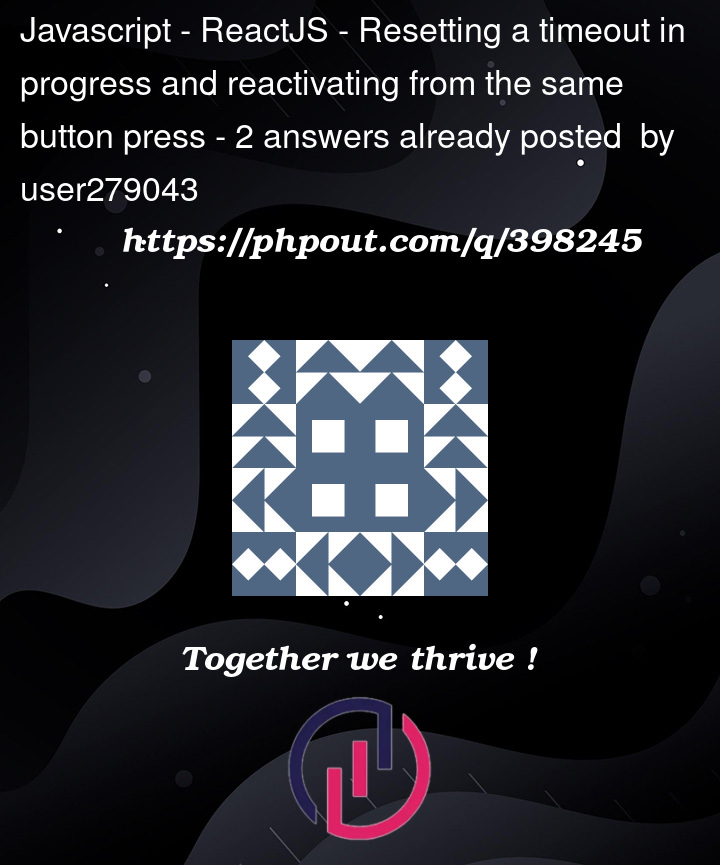I have a button that has a callback function. I want the button to start a timeout with a 5 second delay when clicked. If the button is clicked again within that 5 seconds, I want the timeout to reset without calling the timeout handler. Then when 5 seconds elapses, the handler is called.
[timeoutHasInitiated, setTimeoutHasInitiated] = useState(false);
function callbackFunction() {
if (!timeoutHasInitiated) {
setTimeoutHasInitiated(true);
console.log('Button clicked: Timeout Started.');
const timeout = setTimeout(() => {
setTimeoutHasInitiated(false);
console.log('Timeout has Finished.');
}, 5000);
return () => clearTimeout(timeout);
}
else {
console.log('Button clicked while timeout in progress');
}
}
In the code above, clicking the button after the timeout is in progress does nothing.
If I try something like:
function callbackFunction() {
clearTimeout(timeout);
const timeout = setTimeout(() => {
setTimeoutHasInitiated(false);
console.log('Timeout has Finished.');
}, 5000);
return () => clearTimeout(timeout);
}
I get an error:
Block-scoped variable ‘timeout’ used before its declaration.
Variable ‘timeout’ used before it is assigned.
If I try to declare the timeout first before assigning it to setTimeout() like so:
function callbackFunction() {
let timeout;
clearTimeout(timeout);
timeout = setTimeout(() => {
setTimeoutHasInitiated(false);
console.log('Timeout has Finished.');
}, 5000);
return () => clearTimeout(timeout);
}
The clearTimeout(timeout) called before setTimeout() doesn’t seem to do anything, as multiple timeouts get initiated from multiple button presses.
I suppose I could just disable the button after it is clicked as a workaround, but I was wondering if there was a way to program the desired behavior I described.




2
Answers
If you move your declaration of
timeoutoutside ofcallbackFunction, it should work as you intend.Each call to
callbackFunctioncreates a new execution context so currently each call is accessing its own locally scoped declaration oftimeout, which is why you’re seeing multiple timeouts initiate from multiple button presses. Or you could scopetimeoutto the function by usingthis.timeout, but being self-taught I’m not sure of the downsides of such an approach.First, you’ll need to move the timeout outside the function like this:
Second, you’ll need to change your function like this:
And finally, you’ll need to globally clear the timeout, like this: